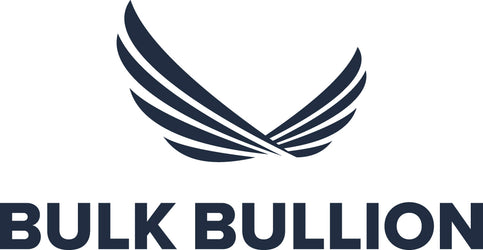
Silver's Industrial Demand and Its Impact on Investment | Bulk Bullion
Silver, a versatile and precious metal, holds a unique position in both industrial and investment landscapes. Its demand is influenced by a multitude of factors spanning from industrial applications to investment strategies.
In the Silver Institute's latest annual forecast, Metals Focus calls for a 2024 deficit of 215.3 million ounces. If reached, it would be the second highest shortfall in more than 20 years.
This unprecedented level of demand was seen across all market segments, including a 22 percent increase in physical investment silver demand. Significant rises in consumption were also seen coming from the silver jewellery (a 29 percent increase) and silverware (an 80 percent boost) segments.
According to the Silver Institute's latest World Silver Survey, other green energy applications, such as power grid construction and automotive electrification, contributed to the overall increase in silver industrial demand.
“The deficit in the silver market helps to provide robust support and a strong floor for the price,” said Philip Newman, managing director at Metals Focus, which produces the annual survey. “The deficit fell by 30 percent last year, but in absolute terms — at 184.3 million ounces — it was still eye-watering. Global supply has been broadly steady at around the 1-billion-ounce mark, while silver industrial demand did incredibly well with 11 percent growth,” he added.
Offsetting these increases, a significant drop in production is expected in Peru due to operational issues, while China is anticipated to experience a decline in silver by-product supply alongside decreasing lead and zinc production.

The Dual Role of Silver in Industry and Investment
1. Industrial Applications (Estimated demand in 2023: 576.4 million ounces):
Silver's remarkable properties make it indispensable in various industrial sectors. Industrial demand for silver is due to its exceptional conductivity of heat and electricity, coupled with high reflectivity and corrosion resistance, render it vital in electronics, photovoltaic cells, and medical devices. The burgeoning demand for smartphones, tablets, and other electronic gadgets fuels the need for silver in the manufacturing of microchips, touchscreens, and connectors.
Similarly, the expanding solar energy market relies heavily on silver for the production of solar panels. Furthermore, silver's antibacterial properties make it a preferred material in medical equipment and wound dressings. The growth trajectories of these industries directly impact the demand for silver, creating a robust foundation for its industrial utilization.
2. Investment Demand (Estimated demand in 2023: 199.5 million ounces):
Silver's status as a precious metal has long attracted investors seeking to diversify their portfolios and hedge against economic uncertainties. Unlike gold, silver's affordability makes it accessible to a broader spectrum of investors. During times of inflation or geopolitical instability, silver often serves as a safe-haven asset, preserving wealth and mitigating risks.
The emergence of exchange-traded funds (ETFs) and other investment vehicles has facilitated easier access to silver markets, augmenting its appeal among institutional and retail investors alike. Additionally, silver's dual role as a monetary metal and an industrial commodity imbues it with intrinsic value, further enhancing its attractiveness as an investment asset.

3. Jewellery and Silverware (estimated demand in 2023: 309 million ounces:
Silver's aesthetic appeal and malleability have endowed it with a rich history in the realm of jewellery and silverware. From ornate necklaces to elegant cutlery, silver's timeless allure transcends cultural boundaries and fashion trends. While gold remains the quintessential precious metal for jewellery, silver offers a more affordable alternative without compromising on elegance or sophistication.
Furthermore, the rise of artisanal craftsmanship and sustainable fashion has revitalized interest in handmade silver jewellery, fostering a niche market for artisanal silversmiths. The evolving tastes of consumers, coupled with disposable income levels and demographic shifts, exert a significant influence on the demand for silver in the jewellery and silverware sectors.
4. Currency and Monetary Demand (estimated demand in 2023: 55.7 million ounces):
Although silver is no longer used as a primary form of currency, it retains its monetary value as a store of wealth and a medium of exchange. Silver coins and bullion serve as tangible assets for investors seeking to preserve capital outside the traditional banking system. Historical precedents, such as the silver standard and bimetallic monetary systems, underscore silver's enduring role in monetary affairs. Moreover, the ongoing debate surrounding fiat currencies and central bank policies accentuates silver's appeal as a monetary alternative. Factors such as inflation rates, currency stability, and geopolitical tensions influence the demand for silver as a monetary asset, driving market dynamics in the precious metals sector.
The demand for silver is shaped by a confluence of factors spanning industrial, investment, aesthetic, and monetary domains. Its intrinsic properties, coupled with its historical significance and contemporary relevance, underscore its enduring allure across diverse sectors. As global trends evolve and market dynamics shift, understanding the multifaceted forces driving silver demand remains paramount for investors, industry stakeholders, and consumers alike.

Leave a comment